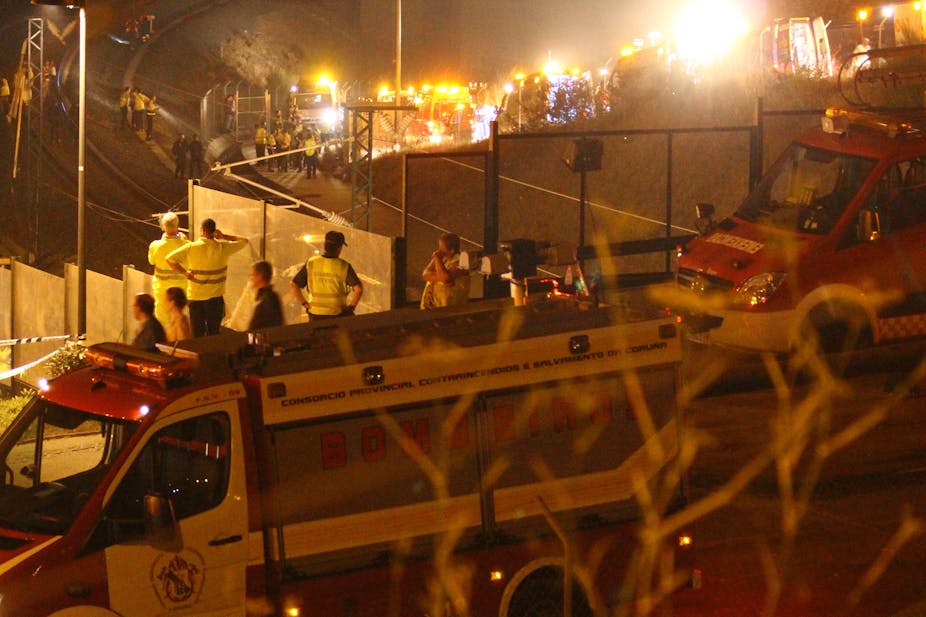Recent days have seen a string of terrible road and rail accidents: train crashes in France, Spain and Switzerland, a coach crash in Italy and, without the same international publicity, the usual steady toll from road accidents. Clearly we are exposed to risk when we travel; but how much risk? And how much are we prepared to pay to reduce that risk?
Big accidents are usually followed by a minister saying: “We will not allow this to happen again, our railways (airlines, coaches etc) must be completely safe”. Closer reflection reveals that the achievement of absolute safety is an impossible mission however laudable the intent.
Published statistics from the UK, indicate the following broad trends, averaged over the period 2002 - 2011. The risk of death on an aeroplane or train is so small as to be effectively zero. Coaches and buses produce 0.3 fatalities per billion passenger kilometres of travel, cars are nearly ten times more dangerous than this, walking and cycling 100 times and motorcycles more than 300 times. How then should we interpret these numbers? We need to differentiate between comparative or relative risk and absolute risk.
First, even for motorcycles, relatively the riskiest mode of transport, the absolute risk that of 98 fatalities per billion passenger kilometres travelled means that we need to go about 10,000,000km on average to have a fatal accident. This is about 13 round trips to the moon – comfortably in excess of what even the keenest motorcyclists will cover in many lifetimes of continuous riding.
Designs on perfection
Generally speaking we have made efforts to improve absolute safety, on roads for example by design (seat belts, crumple zones, ABS braking), by legislation (drink driving laws, speed limits and cameras) and by improvements to roads (better surfaces, lighting, camber etc). And these efforts have paid off handsomely. From 1950, the deaths per billion vehicle kilometres, have fallen from about 100 to now around five.
The safety of trains has also been improved, including the design of crash-resistant carriages, better signalling systems and the introduction of a form of automatic control to prevent, for example, signals being passed at danger. And further improvements will be implemented.
But in reality train travel is both absolutely and relatively safe. The total cumulative number of passengers killed on the UK railways since their inception was less than the number of people killed on our roads each and every year until very recently. It would be technically feasible to reduce railway risk much further, but not at a cost which would price passengers off the railway and onto less safe modes of transport.
Of course, we tacitly accept risk because of the benefits we enjoy from our exposure. In an extreme form, I enjoy rock-climbing and accept the obvious risk, because I enjoy the buzz feeling that I am in control of a dangerous situation. However, the risk we accept on public transport is an involuntarily imposed risk, to which we have a much higher threshold of acceptance.
Nevertheless, this does not excuse the over exposure in our media of lurid reports of accidents and the demand for instant explanation. After full and careful investigation, all accidents produce lessons which can be used to improve safety in the future.
Your money or your life?
I end with my acid test concerning the safety of aircraft and choice. I ask my audience to consider on the one hand the normal aircraft on which they have previously flown on their low cost holiday and secondly, an aircraft with much enhanced safety features. In fact an aircraft 100 times safer than the existing model. They are invited to choose on which aircraft they would like to make their journey.
The issue is that not only is the aircraft 100 times safer, in order to pay for this improvement, the fares are 100 times higher. So the £50 return fare becomes £5000, a major expenditure. Importantly I remind them that on a single aircraft journey the absolute risk of them being killed is effectively zero even on the existing plane. Which plane would you choose?

